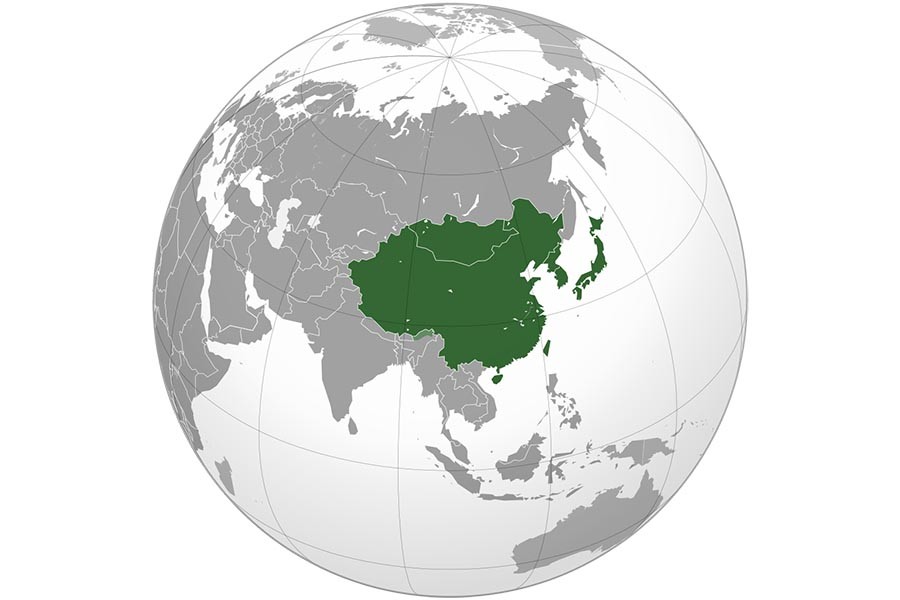Death tolls don't lie. The most striking disparity in COVID-19 fatalities to date is between East Asian countries, where the total number of deaths per million inhabitants is consistently below ten, and much of the West, where the numbers are in the hundreds. For example, Japan has so far reported 7.8 deaths per million, followed by South Korea (5.8), Singapore (4.6), China (3.2), and, most remarkably of all, Vietnam, with zero deaths. By contrast, Belgium now has 846 confirmed deaths per million, and the United Kingdom has 669, followed by Spain (608), Italy (580) and the United States (429).
What accounts for this extraordinary difference? The answers are complicated, but three possible explanations stand out. First, none of the East Asian states believe that they have "arrived," much less achieved the "end of history" at which they regard their societies as being the apotheosis of human possibility. Second, East Asian countries have long invested in strengthening government institutions instead of trying to weaken them, and this is now paying off. And, third, China's spectacular rise is presenting its regional neighbors with opportunities as well as challenges.
It's always dangerous to oversimplify. Yet, the evidence shows that whereas Europeans tend to believe in state-sponsored social security, East Asians still believe that life is composed of struggle and sacrifice. French President Emmanuel Macron is battling to overhaul his country's pension system and decrease retirement benefits in order to achieve much-needed reductions in budget deficits. As a result, France was convulsed for months by "Yellow Vest" protests. But when South Korea faced a far more serious financial crisis in 1997-98, old ladies donated jewelry to the central bank in an effort to help.
East Asians are aware that their societies have done well in recent decades. But constant adaptation and adjustment to a rapidly changing world is still the norm - even in Japan - and huge investments in public institutions have helped these countries to fulfill it.
Here, the contrast with the US could not be starker. Ever since President Ronald Reagan famously declared in his 1981 inaugural address that, "government is not the solution to our problem, government is the problem," the very phrase "good governance" has been an oxymoron in America. We have again seen the consequences of this mindset in recent weeks, with the weakening even of globally respected institutions such as the US Federal Aviation Administration, the US Food and Drug Administration, and the US Centers for Disease Control and Prevention. Even today, with America beset by multiple crises, no prominent US leader dares to say the obvious: "Government is the solution."
East Asian societies, on the other hand, retain a strong and deeply-held belief in good governance, reflecting the traditional Asian respect for institutions of authority. Vietnam's spectacularly effective pandemic response, for example, can be attributed not only to one of the world's most disciplined governments, but also to wise investments in health care. Between 2000 and 2016, per capita public-health expenditures increased by an average of 9% per year. This enabled Vietnam to establish a national public-health emergency operations center and surveillance system in the wake of the 2002-03 SARS epidemic.
Vietnam's track record is all the more astonishing given the country's low starting point. When the Cold War ended three decades ago, and Vietnam finally stopped fighting wars after almost 45 years of near-continual conflict, it had one of the world's poorest populations. But by emulating China's economic model and opening up to foreign trade and investment, Vietnam subsequently became one of the world's fastest-growing economies.
As then-World Bank President Jim Yong Kim pointed out in 2016, Vietnam's average annual growth rate of nearly 7% over the previous 25 years had enabled the country "to leapfrog to middle-income status in a single generation." And during the same period, Kim noted, Vietnam had managed the "especially remarkable achievement" of reducing extreme poverty from 50% to just 3%.
The country's success did not happen in isolation. After the Soviet Union collapsed, Vietnam integrated itself into many of East Asia's existing regional bodies, including the Association of Southeast Asian Nations (ASEAN) and the Asia-Pacific Economic Cooperation (APEC). There, it learned quickly from its neighbors, including China. More recently, Vietnam joined the Comprehensive and Progressive Agreement for Trans-Pacific Partnership, an 11-country trade pact.
China's spectacular resurgence has naturally heightened Vietnamese insecurity, given that the two neighbors have fought as recently as 1979. But rather than paralyzing Vietnamese policymakers, that insecurity has fostered a sense of strategic discipline and vigilance, which has contributed to the country's extraordinary performance during the pandemic. China's rise has had a similar galvanizing effect on some of its other neighbors, including Japan and South Korea.
Singaporean Prime Minister Lee Hsien Loong has often cited the former Intel CEO Andy Grove's mantra that "only the paranoid survive." Paranoia is usually a negative emotion, but it can also trigger a powerful impulse to fight and survive. A deep determination to battle against great odds may explain why East Asia has so far responded far better to the pandemic than most of the West. And if the region's economies also recover faster, they may well offer a glimmer of hope to a world currently drowning in pessimism.
Kishore Mahbubani, a Distinguished Fellow at the Asia Research Institute of the National University of Singapore, is the author of Has China Won?
(Public Affairs, 2020).
Project Syndicate


